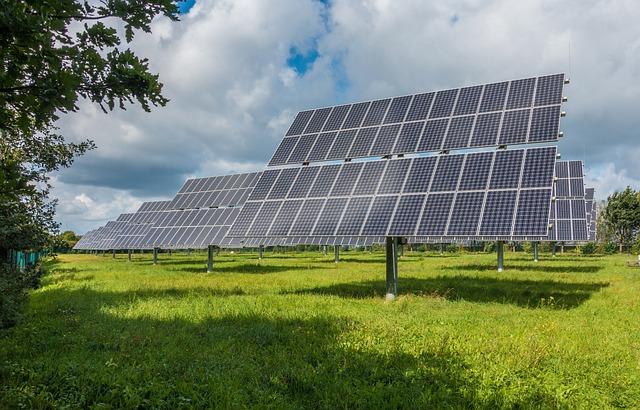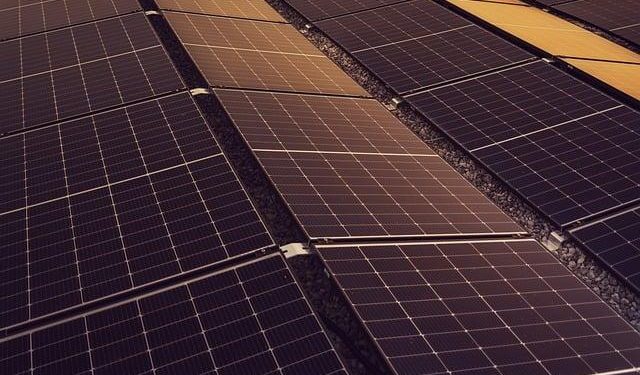In a world increasingly illuminated by the sun’s abundant energy, the retail sector is embarking on a transformative journey, harnessing the power of solar innovation to redefine its spaces. As sunlight pours down on sprawling shopping centers and quaint boutique storefronts alike, it is not just products on the shelves that are being powered, but a new era of sustainability and creativity. From solar-paneled rooftops to cutting-edge energy management systems, retailers are finding ingenious ways to integrate solar technology into their operations, enhancing both their environmental footprint and their bottom line. This shift not only marks a significant step towards greener business practices but also inspires a reimagining of how retail spaces can function, interact, and thrive in harmony with the planet. As we explore the myriad ways solar power is driving innovation in retail, we uncover a landscape where technology and commerce converge under the guiding light of sustainability.
Harnessing the Sun: Transformative Technologies Shaping Retail Environments
As retail spaces evolve to meet the demands of a more eco-conscious consumer base, solar power emerges as a transformative force driving this innovation. Retailers are increasingly integrating solar technologies into their infrastructures, not just as a cost-saving measure, but as a pivotal component of their sustainability strategies. By leveraging solar panels and photovoltaic systems, stores are able to significantly reduce their carbon footprint while also harnessing a reliable and renewable energy source.
- Enhanced Aesthetics: Solar installations are no longer bulky and intrusive. Modern designs seamlessly integrate with the architecture, enhancing the visual appeal of retail environments.
- Energy Independence: With solar power, retailers can reduce their dependency on grid electricity, offering a buffer against volatile energy prices.
- Customer Engagement: Shoppers are increasingly valuing sustainability. Retailers utilizing solar power can attract and engage customers who prioritize eco-friendly shopping experiences.
- Innovative Technologies: From solar-powered lighting to advanced energy management systems, the technology supporting solar adoption continues to evolve, offering retailers new ways to optimize their energy use.
In this shift towards sustainability, solar power is not just an energy solution—it’s a catalyst for innovation, redefining the way retail spaces operate and interact with the environment.
Sustainable Shopping: How Solar Power Enhances Customer Experience
As consumers increasingly prioritize eco-conscious choices, retailers are finding innovative ways to enhance the shopping experience while reducing their carbon footprint. Solar power emerges as a key player in this transformation, offering a unique blend of sustainability and customer-centric solutions. The integration of solar panels not only reduces operational costs but also creates a visually appealing environment that resonates with the values of modern shoppers.
- Ambiance and Aesthetics: Solar-powered lighting can be used to create dynamic and inviting atmospheres, enhancing the aesthetic appeal of retail spaces.
- Interactive Experiences: Solar energy supports interactive displays and digital kiosks, providing customers with engaging and informative experiences.
- Community Engagement: Retailers can host workshops and events to educate consumers about solar technology, fostering a sense of community and shared purpose.
Incorporating solar power into retail environments not only aligns with sustainability goals but also positions brands as forward-thinking and responsive to consumer needs. This sustainable approach not only benefits the environment but also elevates the overall shopping experience, making it a win-win for both businesses and their customers.

Energy Efficiency in Retail: Strategies for Integrating Solar Solutions
As retail spaces evolve, integrating solar solutions emerges as a key strategy to enhance energy efficiency. Retailers can transform their energy consumption patterns by adopting solar technologies, leading to substantial cost savings and environmental benefits. This shift not only underscores a commitment to sustainability but also offers a competitive edge in an increasingly eco-conscious market.
- Rooftop Solar Panels: Many retail stores are utilizing their expansive roof spaces to install solar panels, turning an underutilized area into a powerhouse of renewable energy.
- Solar-Powered Lighting: Incorporating solar-powered LED lighting in parking lots and store perimeters not only reduces electricity costs but also enhances safety and visibility for customers.
- Innovative Facades: Some retailers are experimenting with building-integrated photovoltaics (BIPV), where solar cells are seamlessly integrated into the building’s facade, providing both energy generation and aesthetic appeal.
Energy storage systems are also becoming a popular addition, allowing retailers to store excess solar energy for use during peak hours, further optimizing their energy usage and reducing reliance on the grid. By embracing these solar strategies, retail businesses can significantly reduce their carbon footprint while fostering a forward-thinking brand image.

Innovative Design: Architectural Trends in Solar-Powered Retail Spaces
In the evolving landscape of sustainable architecture, retail spaces are increasingly embracing solar power as a cornerstone of innovative design. Architects are integrating photovoltaic panels in unexpected ways, transforming traditional roofing into dynamic energy-producing surfaces. This approach not only enhances the aesthetic appeal of the building but also optimizes energy efficiency. Solar canopies, for instance, are being creatively used as both shelter and power generators in outdoor retail settings, offering a unique blend of form and function.
- Green facades that incorporate solar panels seamlessly into the building’s exterior.
- Daylighting strategies utilizing solar tubes to illuminate interior spaces naturally.
- Interactive solar displays that engage customers while educating them about renewable energy.
Furthermore, the integration of solar power systems is driving a new wave of adaptive reuse projects, where older retail spaces are revitalized with eco-friendly upgrades. By combining cutting-edge technology with sustainable practices, these solar-powered retail spaces not only reduce carbon footprints but also attract environmentally-conscious consumers, setting a new standard in the retail industry.
In Conclusion
As the sun sets on our exploration of solar power’s transformative role in retail spaces, it becomes clear that this renewable energy source is more than just a trend—it’s a beacon of innovation lighting the way to a sustainable future. Retailers embracing solar energy are not only reducing their carbon footprint but also paving the path for a new era of shopping experiences, where technology and sustainability intertwine seamlessly. As solar panels become as common as the products they help illuminate, the retail landscape will continue to evolve, driven by the relentless pursuit of efficiency and ecological harmony. In this ever-brightening journey, solar power stands as a testament to human ingenuity and our unwavering commitment to a brighter tomorrow.

































